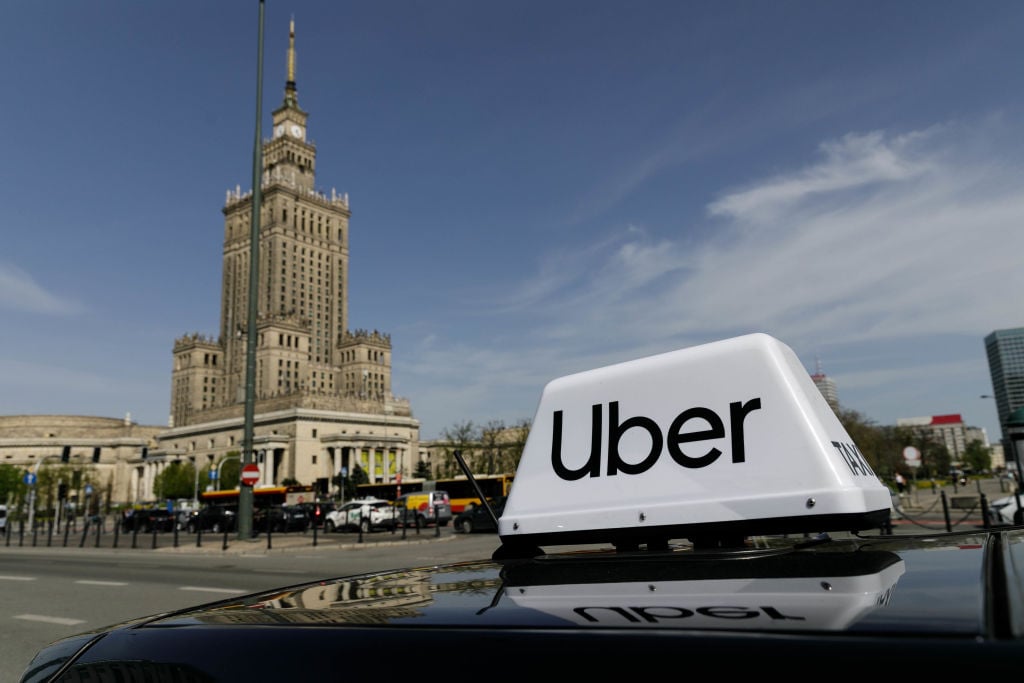Uber Technologies (UBER +2.14%) has successfully reinvented itself. From a money-burning disruptor, it has now evolved into a profitable cash machine, generating over $6.9 billion in free cash flow in 2024.
But beyond its core segments -- mobility and delivery -- Uber is quietly building something that could materially boost its top and bottom lines over time: Uber Ads.
This ad platform, often overlooked by investors, is growing rapidly. And it might just be Uber's most underrated long-term growth engine.

Image source: Getty Images.
Why ads make strategic sense for Uber
Uber isn't a media company, but it sits on something most advertisers dream of: daily intent.
Millions of users open the Uber app each day to book rides, order food, or browse grocery deals. That gives Uber real-world behavioral data -- not just demographics or search keywords -- and it creates natural moments to serve ads. For instance, Uber can serve ads to users at the top of a food search on Uber Eats, before users place a ride order, during wait times while an order is en route, etc.
For merchants -- from local restaurants to large consumer brands -- that's a compelling pitch. Instead of paying for vague impressions or passive clicks, advertisers can promote specific items or offers that show up when customers are already primed to make a purchase.
Moreover, since Uber controls the full journey from impression to checkout, it can offer closed-loop attribution, giving advertisers a clear view of what types of spending drive actual sales.
So whether it's a meal combo, a beverage add-on, or a location-based promo, Uber Ads helps advertisers convert and not just get attention.

NYSE: UBER
Key Data Points
What the numbers say
Uber Ads has gone from concept to scale in just a few years.
In the first quarter of 2025, management said the business had surpassed a $1.5 billion annual revenue run rate, growing over 60% year over year, which makes it one of the fastest-growing parts of the company.
Ads now appear across both mobility and delivery. Demand has been strongest in restaurant delivery, with advertising approaching 2% of delivery gross bookings. Meanwhile, mobility ads -- still early -- are growing even faster, driven by the global expansion of Journey Ads, which are ads served while customers are in transit.
Uber hasn't broken out segment margins, but advertising likely carries one of the highest margins in the business, given its minimal incremental cost. As this segment scales, it could boost Uber's overall margin profile.
What are the prospects for Uber Ads?
At $1.5 billion, Uber Ads is not even 5% of Uber's 2024 revenue of $44 billion. But if current growth holds, it could account for a much larger share in the years ahead.
What makes this business so compelling is that it can grow without adding new users or cities. Instead, Uber can unlock more value per user by introducing either of the following:
- New ad formats -- such as video, premium placement, and full-funnel analytics. For instance, restaurants might run short promotional clips during checkout, while merchants might pay to appear first in a search result.
- Subscription-based ad integrations -- such as sponsored promotions and exclusive offers for Uber One members. Imagine: "Uber One members get 25% off your next McDonald's order."
It's a win-win for users, brands, and the platform. As Uber expands further into groceries, convenience, and autonomous delivery, its ad inventory -- and monetization surface -- will continue to grow.
This strategy mirrors Amazon's ad strategy: layering high-margin advertising on top of a high-frequency transaction platform. Uber doesn't have Amazon's scale, but it has a unique advantage: real-world location and intent data, which traditional digital platforms can't easily match.
And with the global digital advertising market projected to reach $1.2 trillion by 2030, Uber needs only a small slice to build a massive business.
What it means for investors
Uber is evolving from a ride-hailing app to a multisided platform with multiple monetization layers.
Uber Ads is a clear example of that evolution. It's high-margin, scalable, and tied directly to core use -- all while operating in the background of Uber's existing services.
If execution continues, it could become a multibillion-dollar earnings engine, helping Uber deepen margins and smooth out volatility from the core services, mobility and delivery.
For long-term investors, it's worth keeping a close eye on this hidden gem.





